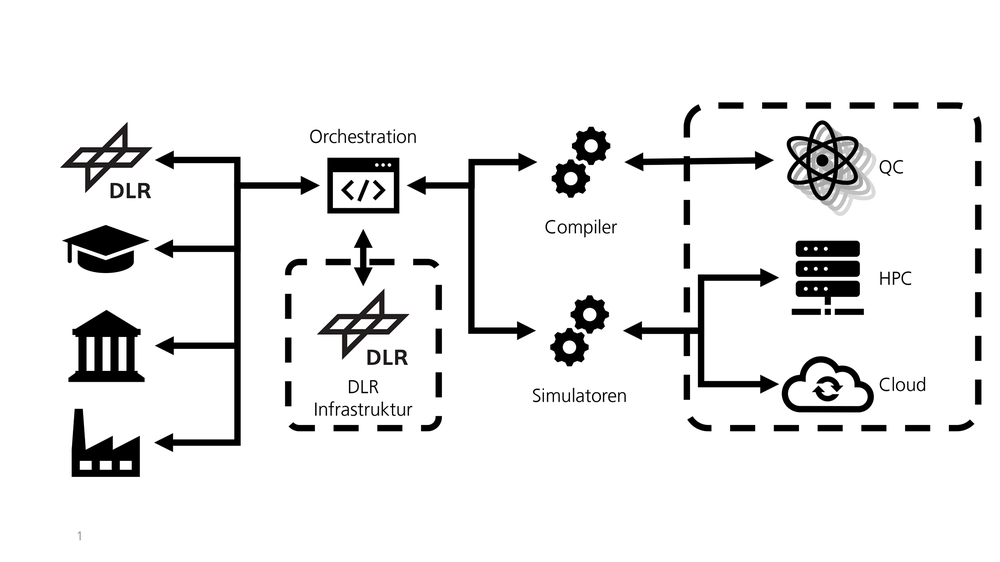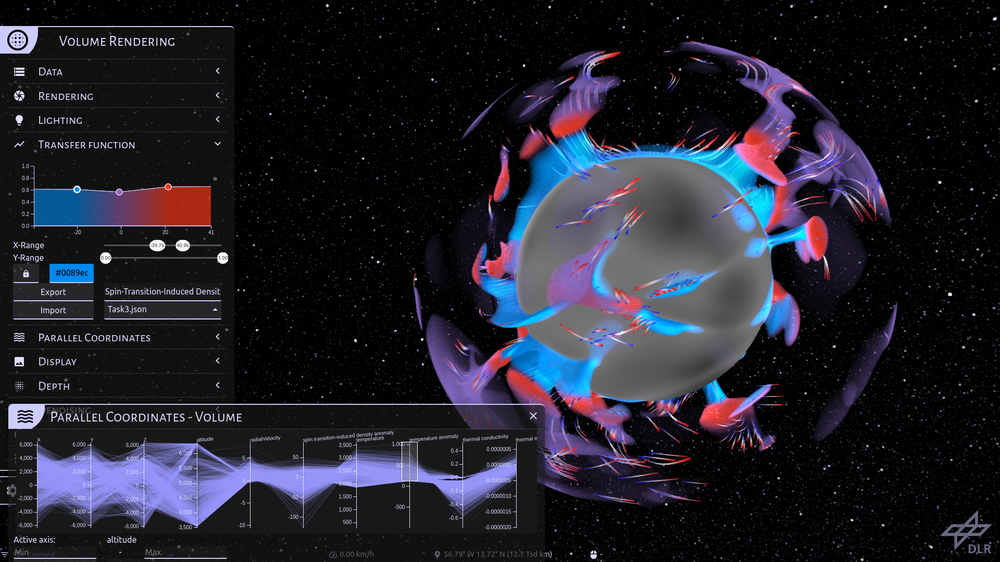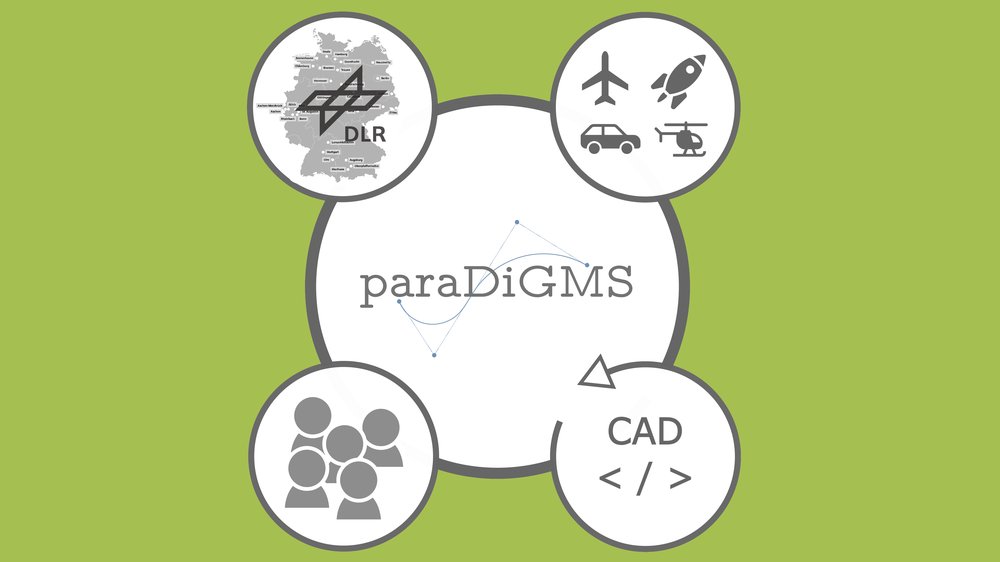The Institute of Software Technology at the German Aerospace Center (DLR) provides the software expertise for working with digital data. With a focus on the potentials of digitalization, we develop platforms and digital twins that connect different disciplines. Thus, digital platforms can integrate tools, bundle competencies, share expertise, and implement technical solutions. Digital platforms enable the integration of software tools as well as low-threshold access to powerful computing clusters, high-performance computers, or quantum computers. Through our research, we contribute to the effective and efficient use of the developed platforms. Digital twins are essential for the design and operation of real systems. Their development is made possible only through the integration of software engineering and computational expertise—expertise that our institute provides.
Examples of digital platforms developed by the Institute of Software Technology:
- RCE is a distributed, workflow-driven integration environment for development tools, specifically designed for collaborative work on complex systems such as airplanes, ships, or satellites. With RCE, engineers working spatially and temporally distributed in the overall process can integrate and use their own design and analysis tools.
- With paraDiGMS, an open-source tool landscape for geometry modeling and Computer-Aided Design (CAD) is being developed for use within and outside the DLR. This user-friendly digital platform enables collaborative, agile, and requirements-driven development of geometry modeling methods. This allows complex interdisciplinary models to be developed jointly in short development cycles. One area of application is digital twins in aerospace, where virtual modeling and simulation of a system in conjunction with a real component lead to optimizations in development and maintenance.
- In the CLIQUE project, a digital platform for quantum applications is being developed at the DLR. CLIQUE aims to provide low-threshold access to the DLR's quantum computers of the near future to the institutes and facilities of the DLR from all research areas. Using access software, a compiler for quantum circuits, and a database with example applications, the DLR quantum computers can be accessed by all users. The software platform coordinates the distributed execution of quantum algorithms on the users' classical computers, the DLR's HPC systems, and the DLR quantum computers.
- In the VisPlore project, a data analysis and visualization platform is being developed. This will establish a distributed software infrastructure within the DLR, enabling efficient analysis of large scientific datasets through methods of interactive visualization. On one hand, the quality of datasets during generation will be significantly increased. On the other hand, the management of datasets will be improved through distributed storage and transparent access. Ultimately, the use of these data resources will be enabled through local, interactive visualization and connection to the high-performance infrastructure.



